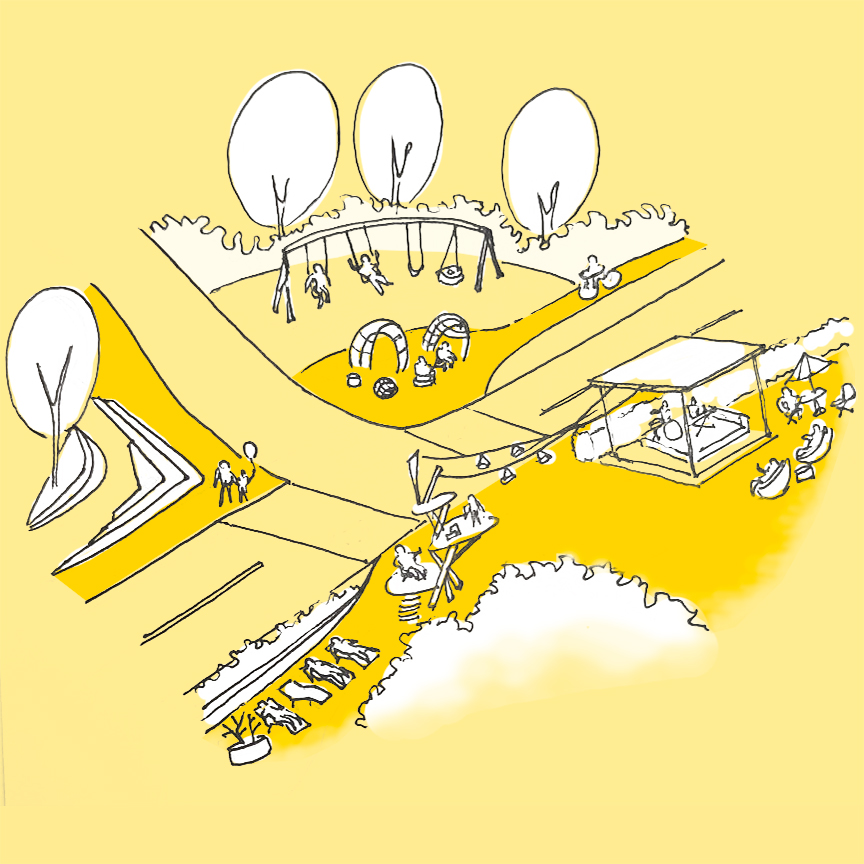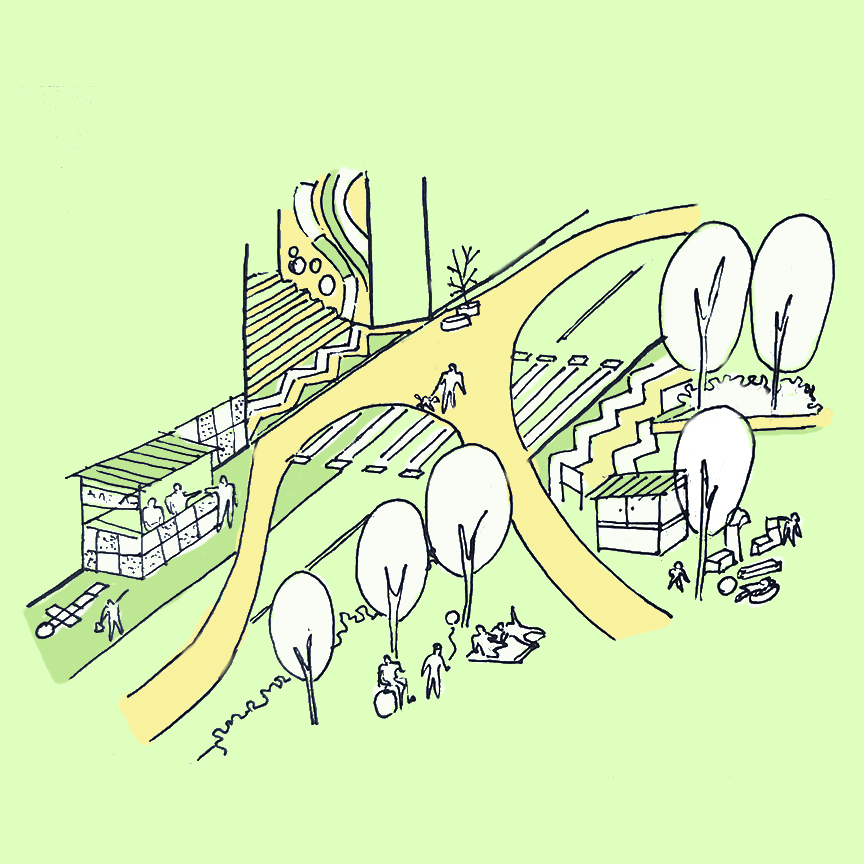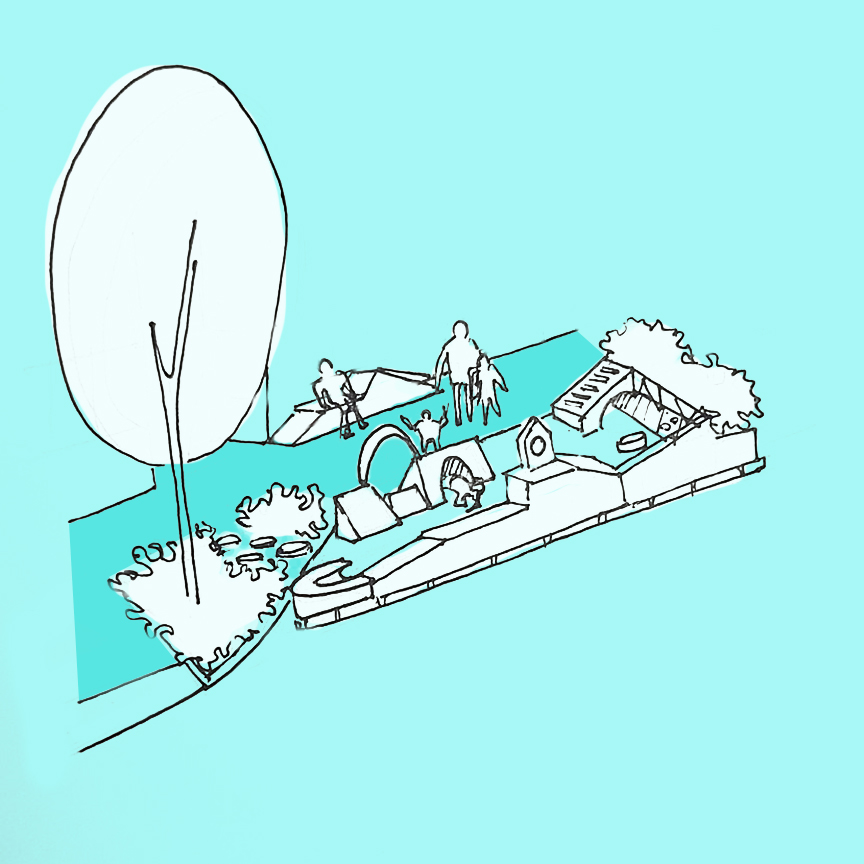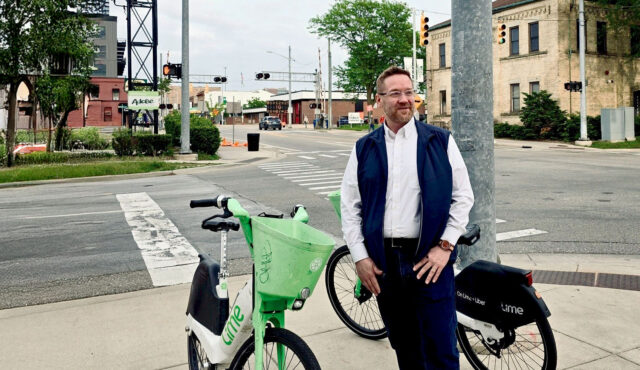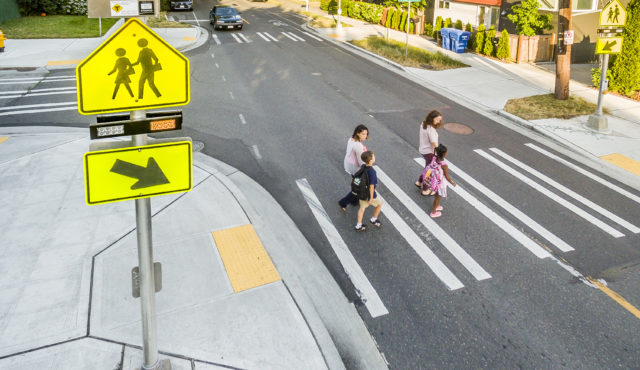This post is co-authored by Designer II Krithika Mohan and Senior Planner Beth Rosenbarger.
Imagine a busy street with motor vehicles rushing through to get to their destinations. Now imagine the street with wide sidewalks and safe space for crossing pedestrians. Now go even further and imagine passing through a colorful gateway (or “folie”) into a mini plaza with musical swings and seating areas adjacent to the walkway. An unexpected detour in the public right of way suddenly provides a whimsical respite for busy bodies to briefly gather, tell stories, and collectively experience their community.
This is play, and it can happen outside a traditional playground. We can purposely plan and design our public spaces to give rise to spontaneous moments of connection for all ages. Because everyone deserves to get home safely and joyfully.
Play is Good for Everyone
By land area, streets are our largest public space. If we see streets only as utilitarian corridors, we’re underutilizing a vast public resource. Play has the power to transform spaces and the people moving through them, offering respite, spontaneity, and safety.
Streets that are welcoming to children are better for everyone. We know this is true for safety outcomes; it’s just as true for play and mental wellness. When streets feel safe and joyful for kids, they foster genuine social connections across all age groups. (We’re loving the Streets for Kids webinar series on this topic.)
Playful elements are often dismissed as nonessential, and they’re the first things to go when design budgets tighten. But play is too powerful to be treated as a recreational afterthought. Free play helps children build confidence, self-regulation, and community awareness. And while it may look different, adults need unstructured play too. It fosters creativity, collaboration, spontaneity, intrinsic motivation, and emotional well-being.
I grew up with a family swing at home and tall swings at the playground nearby. This shaped my experience of play. My mom and I still delight in sharing any swinging bench we find.
— Krithika Mohan
A Brief History of Playing in the Street
It used to be routine for children to play in the street, even before New York pioneered “play streets” in 1914. Public squares and streets have always been spaces for social and cultural exchange, and street play has historically brought communities together and made neighborhoods more livable.
The rise of the automobile in the 20th century changed that dynamic. As cars became more dominant, streets were engineered for faster vehicle movement, pushing children and pedestrians aside. Play was moved off the street and into designated playgrounds and parks, physically separating kids from the flow of daily life and removing opportunities for intergenerational interaction.
This separation reinforces the idea that different aspects of life — living, working, learning, and playing — must happen in different places. We go to each specific place to do each specific task. When spaces for play are separated from where people live or work, making time for play becomes harder, deepening inequities in who gets to participate in joyful, restorative experiences.
I see streets as the backdrop of our lives. We want to set the scene to help people live a little lighter as they go about their day — with joy and play.
— Beth Rosenbarger
Putting the Play in Placemaking
One solution is, of course, to improve access to parks and playgrounds. But it’s also essential to consider opportunities for play in our streets and public spaces. Streets, unlike most parks, are right outside our doors. What if they supported well-being, neighborly connection, and physical activity?
At Toole Design, we have planned and designed innovative playscapes and traffic gardens that encourage child-led play. Play spaces can act as miniature cities, with sculptural, open-ended features that invite creativity and evolve over time. Traffic gardens, which are scaled-down street networks designed for new riders, are more than training areas for Safe Routes to School (though they are great for that!). They also offer flexible platforms for testing semi-permanent, community-based play ideas outside the traditional playground.
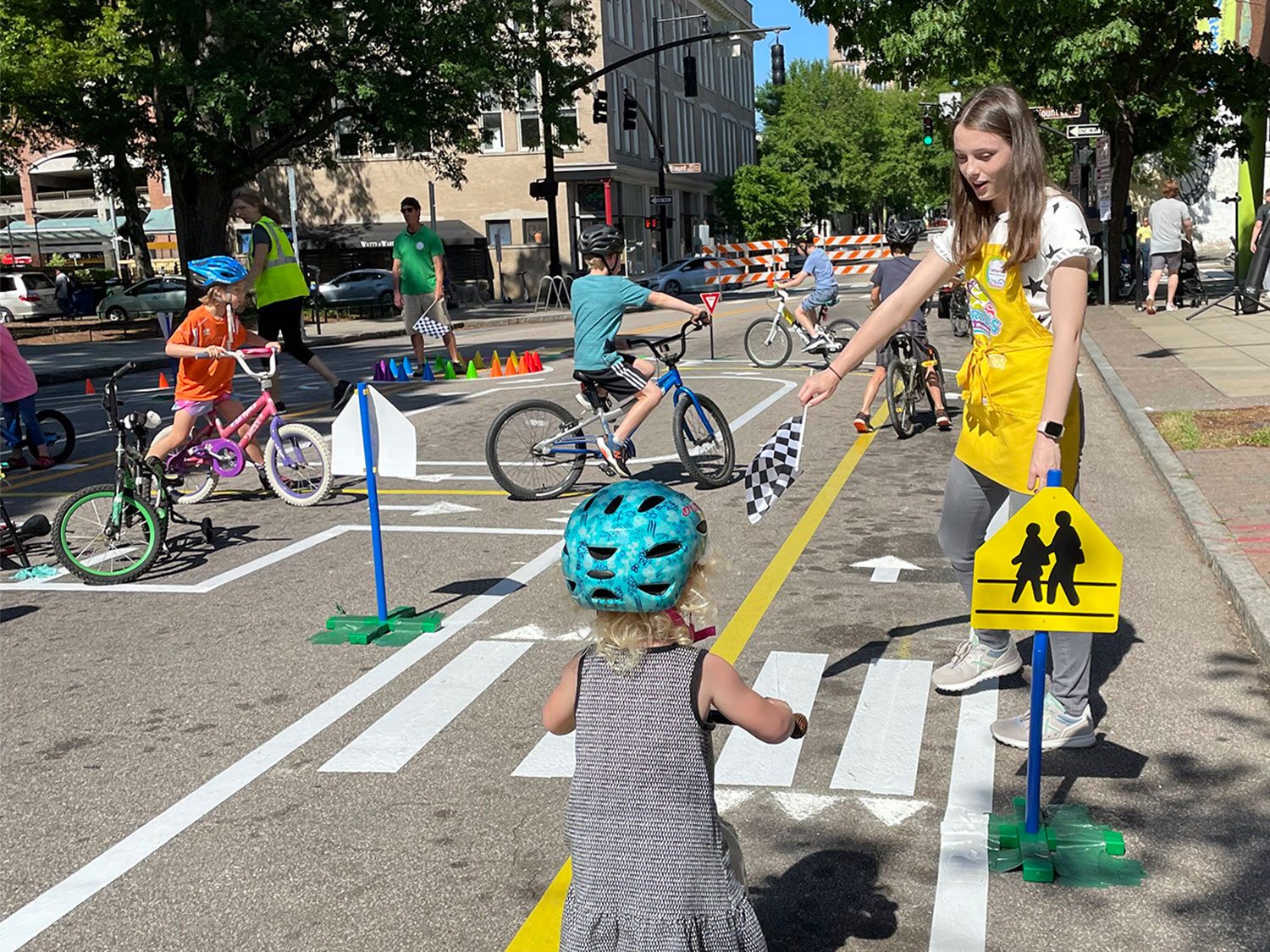
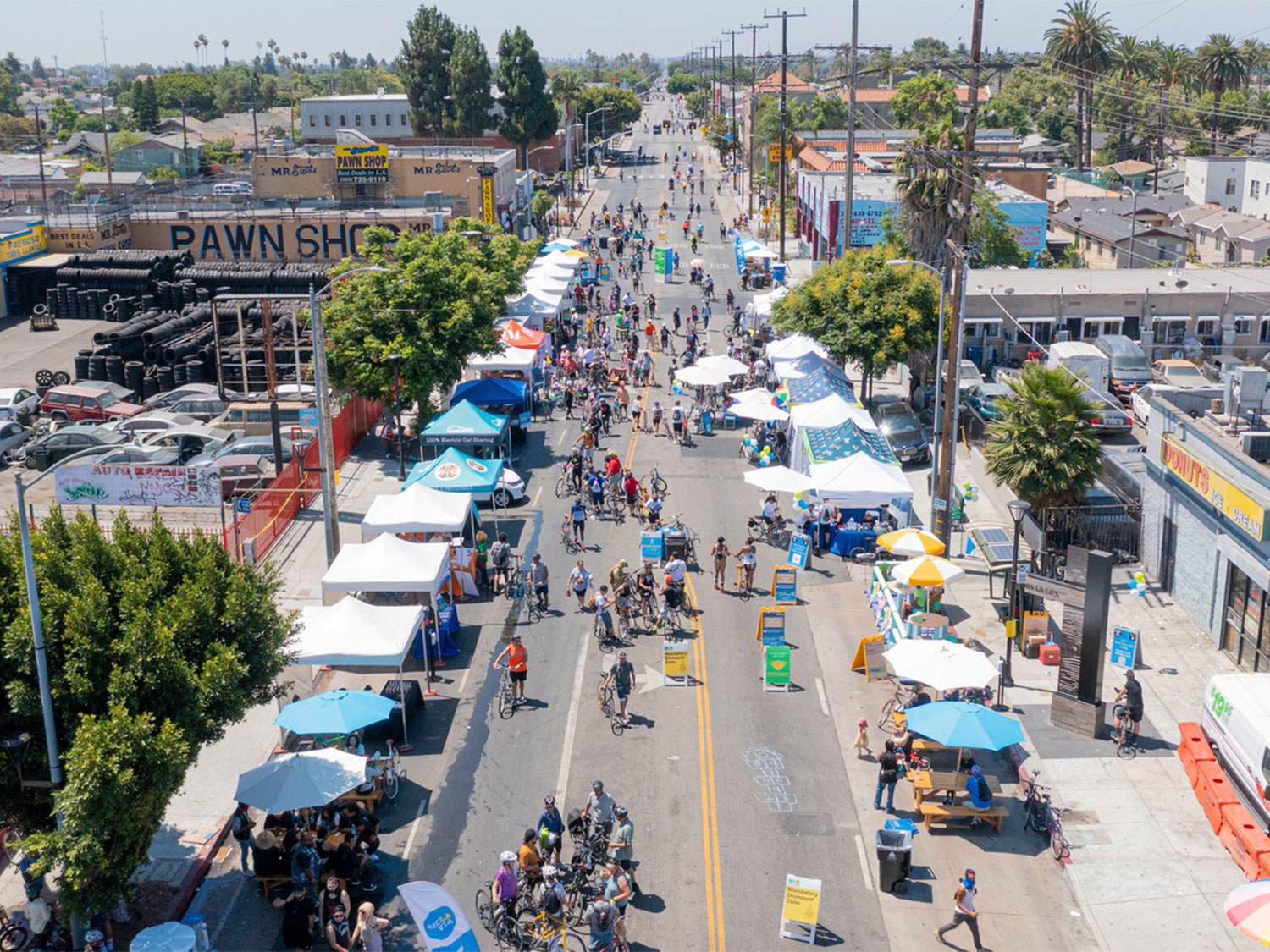
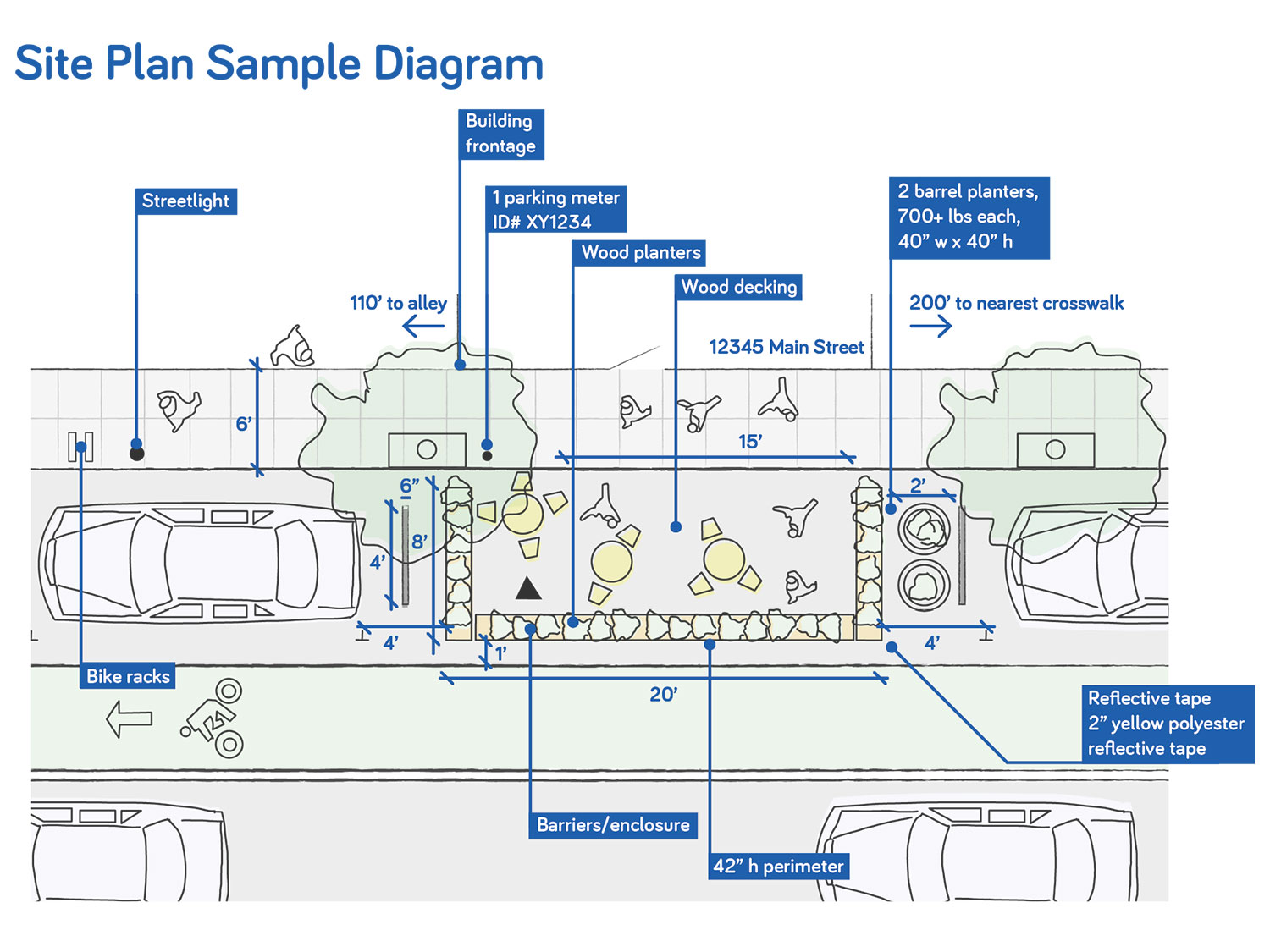
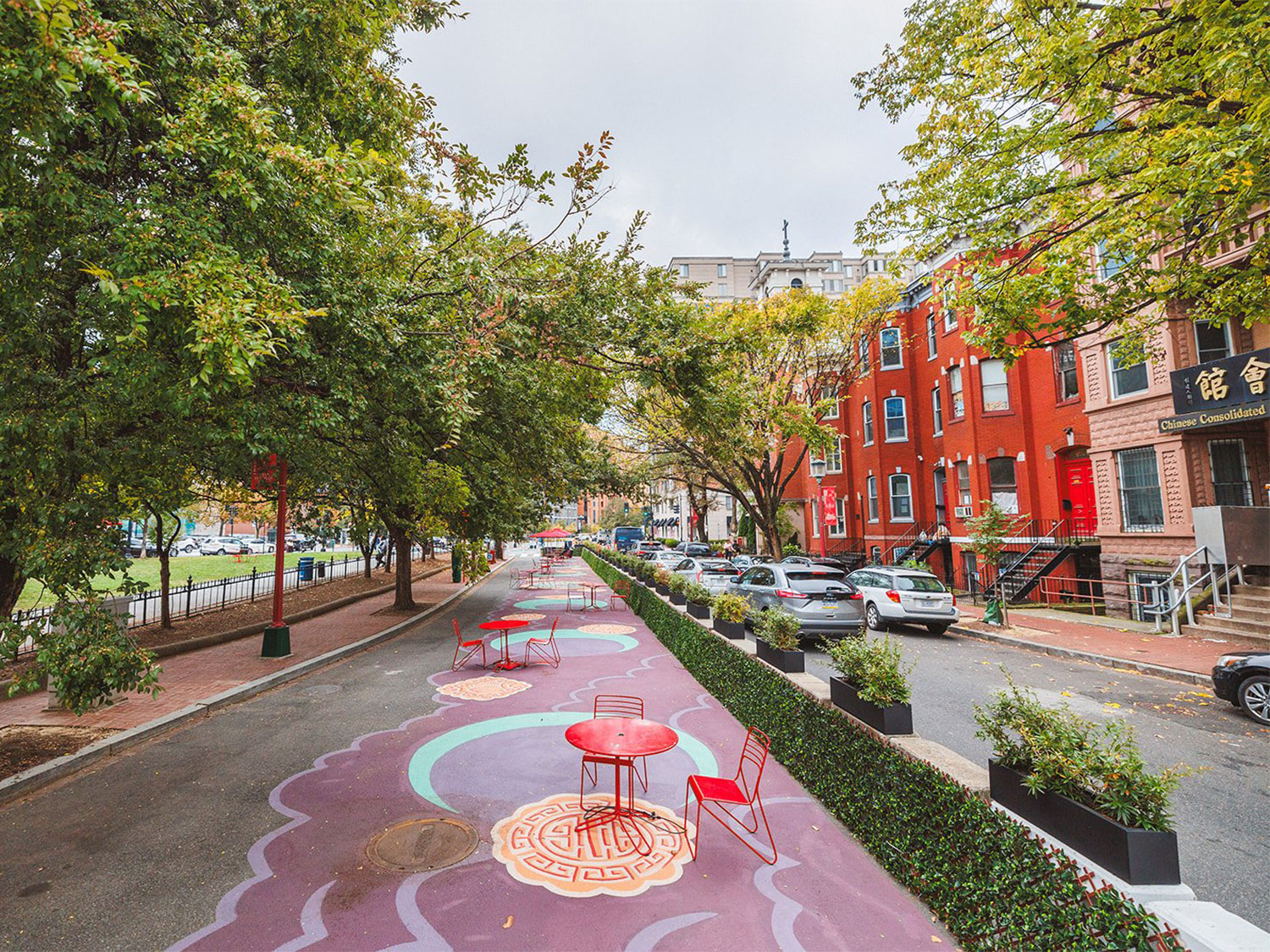
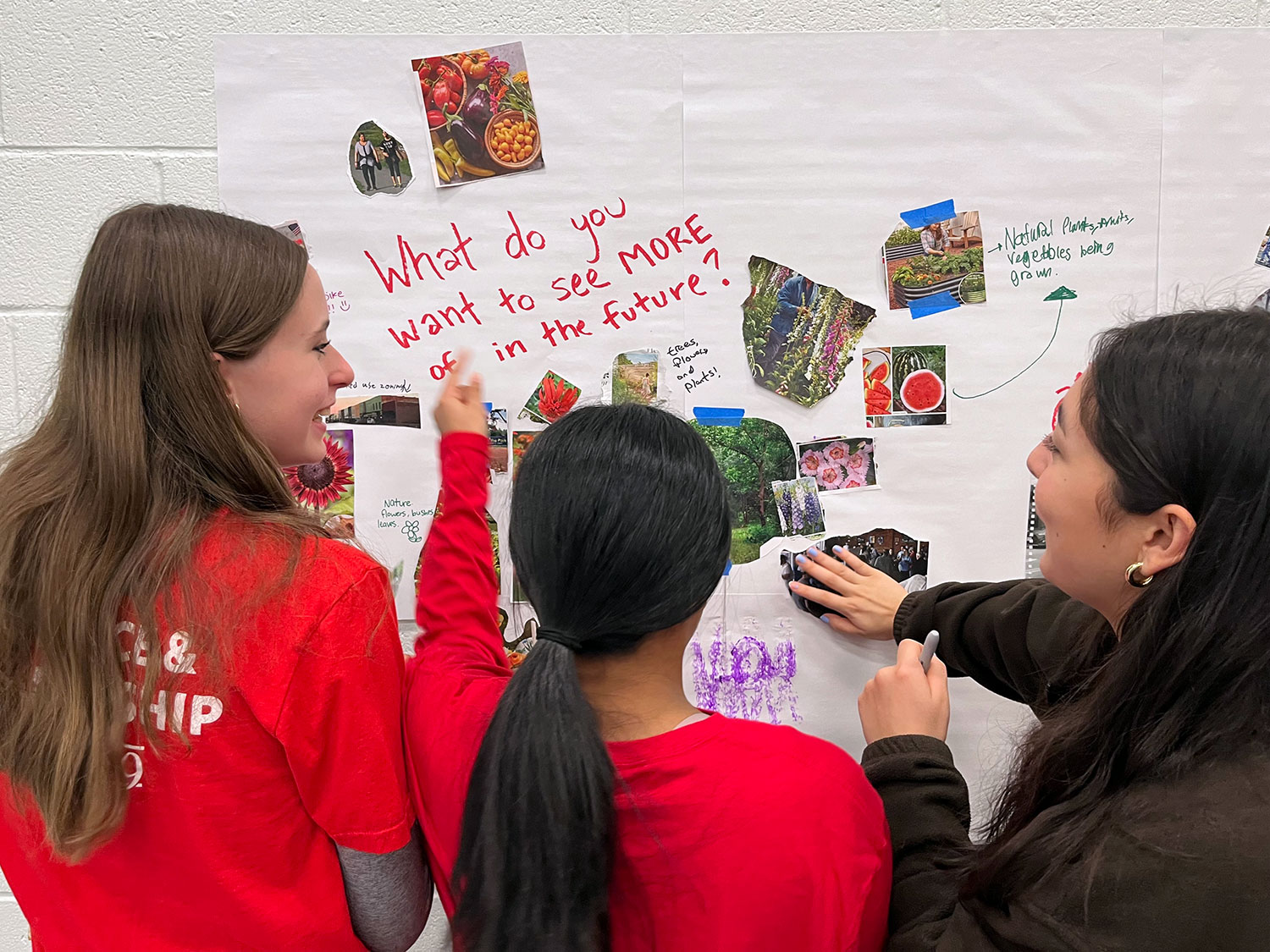
We also bring experience developing guidelines and concepts for Open Streets events, pop-ups, parklets, and streateries, which reclaim streets as shared community space. Open Streets and other events test the possibilities of what a street can be and for whom. They offer residents a new experience: the radical, but intuitive idea that a street is public space and that public space can support a wide range of community goals.
At Toole Design, every street project is an opportunity to create more joyful, welcoming, and people-centered environments. When we center the experience of a place, we give people space to linger and connect in the spaces between A and B. We give them an invitation to play.
